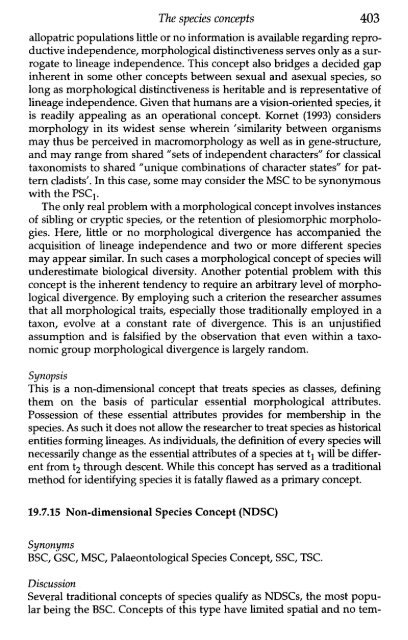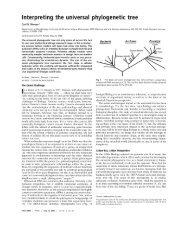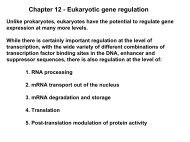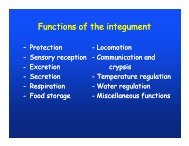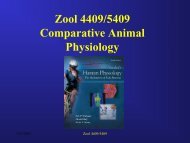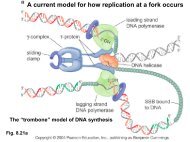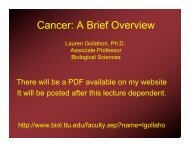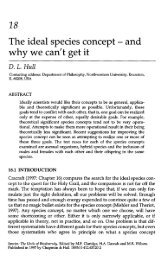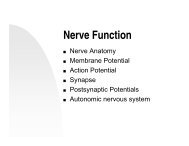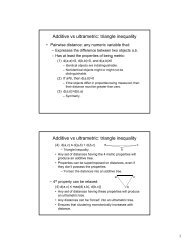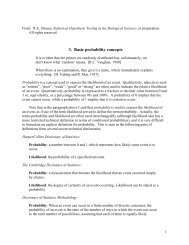Mayden, 1997 - Texas Tech University
Mayden, 1997 - Texas Tech University
Mayden, 1997 - Texas Tech University
You also want an ePaper? Increase the reach of your titles
YUMPU automatically turns print PDFs into web optimized ePapers that Google loves.
The species concepts 403allopatric populations little or no information is available regarding reproductiveindependence, morphological distinctiveness serves only as a surrogateto lineage independence. This concept also bridges a decided gapinherent in some other concepts between sexual and asexual species, solong as morphological distinctiveness is heritable and is representative oflineage independence. Given that humans are a vision-oriented species, itis readily appealing as an operational concept. Kornet (1993) considersmorphology in its widest sense wherein 'similarity between organismsmay thus be perceived in macromorphology as well as in gene-structure,and may range from shared"sets of independent characters" for classicaltaxonomists to shared "unique combinations of character states" for patterncladists'. In this case, some may consider the MSC to be synonymouswith the PSC 1 .The only real problem with a morphological concept involves instancesof sibling or cryptic species, or the retention of plesiomorphic morphologies.Here, little or no morphological divergence has accompanied theacquisition of lineage independence and two or more different speciesmay appear similar. In such cases a morphological concept of species willunderestimate biological diversity. Another potential problem with thisconcept is the inherent tendency to require an arbitrary level of morphologicaldivergence. By employing such a criterion the researcher assumesthat all morphological traits, especially those traditionally employed in ataxon, evolve at a constant rate of divergence. This is an unjustifiedassumption and is falsified by the observation that even within a taxonomicgroup morphological divergence is largely random.SynopsisThis is a non-dimensional concept that treats species as classes, definingthem on the basis of particular essential morphological attributes.Possession of these essential attributes provides for membership in thespecies. As such it does not allow the researcher to treat species as historicalentities forming lineages. As individuals, the definition of every species willnecessarily change as the essential attributes of a species at t 1 will be differentfrom t2 through descent. While this concept has served as a traditionalmethod for identifying species it is fatally flawed as a primary concept.19.7.15 Non-dimensional Species Concept (NDSC)SynonymsBSC, GSC, MSC, Palaeontological Species Concept, SSC, TSC.DiscussionSeveral traditional concepts of species qualify as NOSCs, the most popularbeing the BSC. Concepts of this type have limited spatial and no tem-


